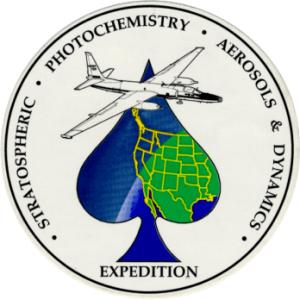The NASA High Speed Research Program (HSRP) is charged with assessing by 1995 the environmental impact of a projected fleet of high-speed civil transports (HSCT's, a commercial supersonic aircraft fleet). The Atmospheric Effects of Stratospheric Aircraft Program (AESA) was established within the HSRP to prepare an assessment of the chemical perturbations to the atmosphere caused by HSCT emissions. The primary focus of AESA is on the photochemistry of the lower stratosphere with emphasis on ozone production or loss affected by the chemical perturbations. The AESA Program is taking a three tiered approach in making its assessment with program elements covering 1) atmospheric observations, 2) numerical modeling, and 3) laboratory experiments.
The Stratospheric Photochemistry, Aerosols and Dynamics Expedition (SPADE) is the first dedicated field mission to acquire atmospheric measurements in support of the AESA Program. Though SPADE will be the first dedicated HSRP/AESA field mission, the HSRP did contribute to the Airborne Arctic Stratospheric Expedition (AASE) II. During AASE II measurements were made from both the ER-2 and DC-8 aircraft at mid and high northern latitudes. The key finding related to AESA and included in the End of Mission Statement released on 30 April 1992 was as follows. "The importance of heterogeneous reactions on sulfate aerosols has been verified by these aircraft studies. Thus, the impact of additional NOx on ozone in the lowere stratosphere is expected to be much smaller than previously predicted and now may be closer to that simulated with the most recent global assessment modes that include heterogeneous sulfate-layer chemistry."
SPADE will follow up and build on the results from AASE II as well as the previous polar ozone missions (AAOE 1987, and AASE 1989). Several new instruments and modifications to exisiting instruments will provide key measurements to shore up some of the missing pieces of the ozone destruction puzzle. The primary thrust of SPADE will be to quantify some of the key chemical reaction rates affecting ozone production and loss.


